- Joined
- Feb 7, 2014
- Messages
- 350
The end goal is to make a free pistol of my own design, but having never machined a pistol before; I am going to copy a commercial receiver as a base. So I’m sorta modifying a production pistol design, but I am also remaking it along the way. The non-firing prototype frame will be 6061 T6 aluminum. The final version will be 7075 T6/651 aluminum. If anyone should choose to copy my design, they do so at their own risk and after making their own calculations. I will not be holding the finished pistol in my hand for its test firing, and neither should anyone when first firing a new design. I do not intend to publish the prototype or shop drawings, just to make sure that I am not blindly followed by someone that doesn’t understand the design.
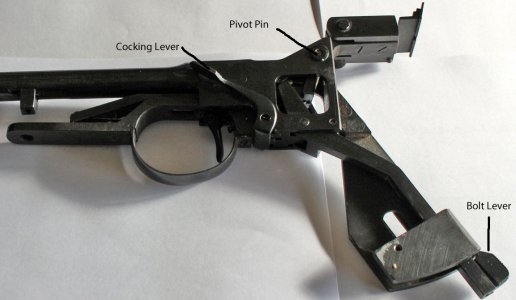
The original receiver was made from a single block of steel. I am doing the same in aluminum, partly to save weight and partly because I can. I have toyed with the idea of the Jaco route with a side plate, but there isn’t much room in the breach area for screws, and beefing things up to make use of a side plate kinda defeats any weight savings gained from using aluminum. To do it from a single billet requires a small, deep pocket, approximately ½” wide by 1.5” long, and 2” deep. Try as I might, I can’t seem to get the walls of the pocket smooth without resorting to file and sand paper. I am fighting rigidity of the machine and vibration and deflection of a long cutter.
I started out mimicking the method used to open the mag well on a 0% AR lower, 1/8 inch holes in the corners, drill out the center, then finish removing material with an end mill.
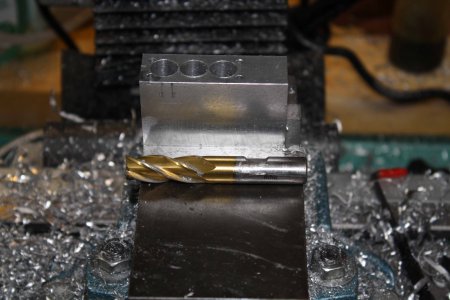
The problem in my smaller pocket is getting an end mill that would reach to the bottom. The longest ¼” mill that I could find would only go 1 ¾” deep. That meant that I would have to machine half way down from the top, then flip the receiver over and cut the lower half. My DRO on the mill made lining up the two pockets possible, but there were still problems. Vibration and cutter flex left a less than stellar wall. surface. I tried a couple of strategies. The one that worked the best was to skip the 1/8” holes, drill out the center, rough mill to just over ½ depth with a shorter ¼” cutter, then form the corners and finish the sides with a 1/8” carbide cutter. The carbide cutter has a shank the same diameter as the flutes, so it will reach all the way down if you only take off a few mills per pass.
The receiver was bored and threaded on the lathe. The barrel thread is ½-20 for ¾”. The tenon length TBD once the bolt is fabricated.
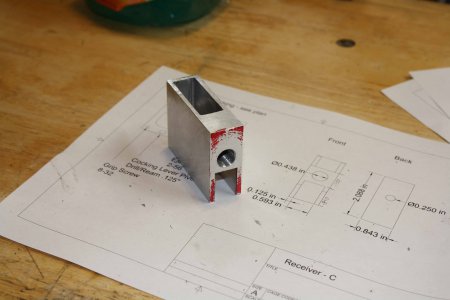
All previous machining was done on the manual mill because it is much more rigid than the X2 CNC. Profiling lent itself better to CNC. The angles and arcs made it worthwhile to invest time into programming. As usual, there was an exciting event under program control. The CAM program didn’t know about the clamps holding the work piece down. It tried to cut one of the clamp bars. This is the setup with the test part under the cutter, with the damaged clamp in front. I have never understood the people that insist that the plastic gears in the X2 are flimsy. This isn’t the first time that I have made a programming mistake.
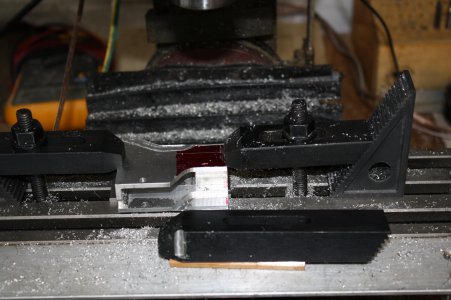
Below is the prototype receiver. Only a little more corner rounding and the pin hole reaming needs to be done.
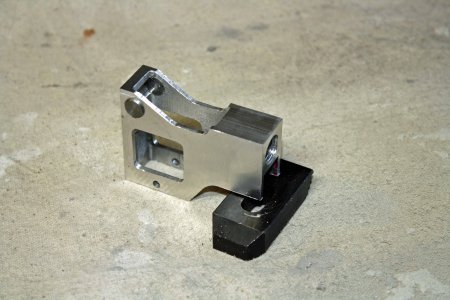 And now to see if the stock internal parts fit and operate.
And now to see if the stock internal parts fit and operate.
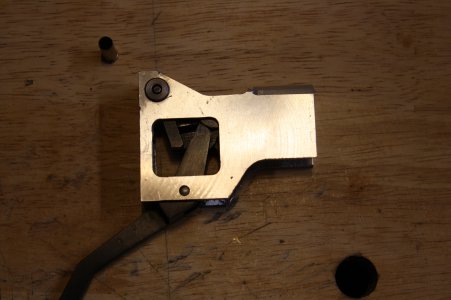
The block rotates, the firing pin cocks and releases. Next I need to fabricate the bolt.

The original receiver was made from a single block of steel. I am doing the same in aluminum, partly to save weight and partly because I can. I have toyed with the idea of the Jaco route with a side plate, but there isn’t much room in the breach area for screws, and beefing things up to make use of a side plate kinda defeats any weight savings gained from using aluminum. To do it from a single billet requires a small, deep pocket, approximately ½” wide by 1.5” long, and 2” deep. Try as I might, I can’t seem to get the walls of the pocket smooth without resorting to file and sand paper. I am fighting rigidity of the machine and vibration and deflection of a long cutter.
I started out mimicking the method used to open the mag well on a 0% AR lower, 1/8 inch holes in the corners, drill out the center, then finish removing material with an end mill.

The problem in my smaller pocket is getting an end mill that would reach to the bottom. The longest ¼” mill that I could find would only go 1 ¾” deep. That meant that I would have to machine half way down from the top, then flip the receiver over and cut the lower half. My DRO on the mill made lining up the two pockets possible, but there were still problems. Vibration and cutter flex left a less than stellar wall. surface. I tried a couple of strategies. The one that worked the best was to skip the 1/8” holes, drill out the center, rough mill to just over ½ depth with a shorter ¼” cutter, then form the corners and finish the sides with a 1/8” carbide cutter. The carbide cutter has a shank the same diameter as the flutes, so it will reach all the way down if you only take off a few mills per pass.
The receiver was bored and threaded on the lathe. The barrel thread is ½-20 for ¾”. The tenon length TBD once the bolt is fabricated.

All previous machining was done on the manual mill because it is much more rigid than the X2 CNC. Profiling lent itself better to CNC. The angles and arcs made it worthwhile to invest time into programming. As usual, there was an exciting event under program control. The CAM program didn’t know about the clamps holding the work piece down. It tried to cut one of the clamp bars. This is the setup with the test part under the cutter, with the damaged clamp in front. I have never understood the people that insist that the plastic gears in the X2 are flimsy. This isn’t the first time that I have made a programming mistake.

Below is the prototype receiver. Only a little more corner rounding and the pin hole reaming needs to be done.
 And now to see if the stock internal parts fit and operate.
And now to see if the stock internal parts fit and operate.
The block rotates, the firing pin cocks and releases. Next I need to fabricate the bolt.

